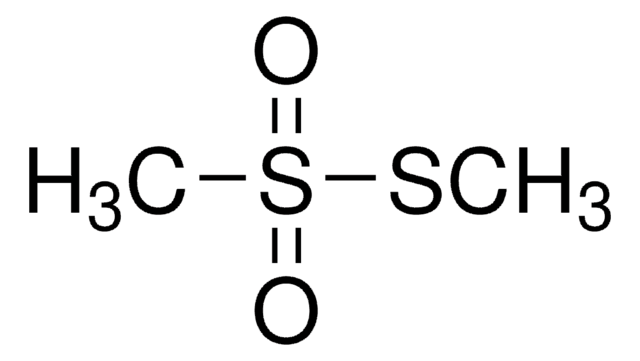Wichtige Dokumente
A1935
Photobiotin -acetat (Salz)
For labeling DNA probes for hybridizations
Synonym(e):
Biotin-{3-[3-(4-azido-2-nitroanilino)-N-methylpropylamino]-propylamid} -acetat (Salz), N-(4-Azido-2-nitrophenyl)-N′-(3-biotinylaminopropyl)-N′-methyl-1,3-propandiamin -acetat (Salz)
Größe auswählen
€ 664,00
Voraussichtliches Versanddatum30. Mai 2025
Größe auswählen
About This Item
€ 664,00
Voraussichtliches Versanddatum30. Mai 2025
Empfohlene Produkte
Qualität
Molecular Biology
for molecular biology
Qualitätsniveau
Assay
≥95%
Form
film or powder
Löslichkeit
H2O: 10 mg/mL (Stable for at least 5 months if kept frozen and protected from light.)
Lagertemp.
−20°C
SMILES String
CC(O)=O.CN(CCCNC(=O)CCCC[C@@H]1SCC2NC(=O)NC12)CCCNc3ccc(cc3[N+]([O-])=O)N=[N+]=[N-]
InChI
1S/C23H35N9O4S.C2H4O2/c1-31(12-4-10-25-17-9-8-16(29-30-24)14-19(17)32(35)36)13-5-11-26-21(33)7-3-2-6-20-22-18(15-37-20)27-23(34)28-22;1-2(3)4/h8-9,14,18,20,22,25H,2-7,10-13,15H2,1H3,(H,26,33)(H2,27,28,34);1H3,(H,3,4)/t18-,20-,22-;/m0./s1
InChIKey
FFBLNTOMOSLSQM-AYEYRVMASA-N
Suchen Sie nach ähnlichen Produkten? Aufrufen Leitfaden zum Produktvergleich
Allgemeine Beschreibung
Anwendung
Biochem./physiol. Wirkung
Vorsicht
Ähnliches Produkt
Lagerklassenschlüssel
11 - Combustible Solids
WGK
WGK 3
Flammpunkt (°F)
Not applicable
Flammpunkt (°C)
Not applicable
Persönliche Schutzausrüstung
Eyeshields, Gloves, type N95 (US)
Hier finden Sie alle aktuellen Versionen:
Analysenzertifikate (COA)
Die passende Version wird nicht angezeigt?
Wenn Sie eine bestimmte Version benötigen, können Sie anhand der Lot- oder Chargennummer nach einem spezifischen Zertifikat suchen.
Besitzen Sie dieses Produkt bereits?
In der Dokumentenbibliothek finden Sie die Dokumentation zu den Produkten, die Sie kürzlich erworben haben.
Active Filters
Unser Team von Wissenschaftlern verfügt über Erfahrung in allen Forschungsbereichen einschließlich Life Science, Materialwissenschaften, chemischer Synthese, Chromatographie, Analytik und vielen mehr..
Setzen Sie sich mit dem technischen Dienst in Verbindung.







